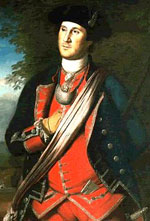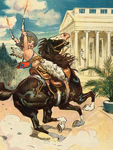The White House Historical Association works "to enhance the understanding, appreciation and enjoyment of the White House." The website has a number of useful educational resources if you know where to look.
Start with the Themes and Media page that gathers educational resources from the entire website into thematic categories from African American history to protests. Within each collection, you'll find relevant selections from the website's pool of 10 text timelines, more than 15 online exhibits and tours, and more than 20 lesson plans labeled by grade level. One exhibit covers the political symbolism of, and national reaction to, First Lady Lou Hoover's invitation of Jessie DePriest, wife of the first African American elected to Congress in the 20th century, to tea.
The History page gathers the majority of these resources in one location. From information on artwork in the White House to milestones in White House staff history to White House pets, there's plenty to discover.
Most of the content in the Classroom section overlaps with that in History. However, here you can access all available lesson plans, sorted by grade level (K3, 48, 912), as well as more than 10 primary sources. Finally, this is the place to go for more information on touring the White House or reserving a program for your DC Metro-area classroom.

